This phrase is probably the worst thing to hear from a potential client: “So you’ve no experience in our industry and you want us to give YOU the job?”
It hits right at the heart of the ‘imposter syndrome’ that haunts most of us – that we’re not quite good enough and one day we’re going to be found out. It’s a pernicious feeling that undermines our confidence, holds us back and perhaps even worse, sets us up to fail.
Now you could do a day or two of research work on the client’s market to get yourself up to speed – but even after that there’s no guarantee your work will impress and help change their minds.
You need to change their perception of you and demonstrate that you can quickly get to grips with their industry. Move the discussion away from your lack of experience and focus on your ability to find what their competitors are up to.
There’s a quick way to use Majestic that I’ve found gives me great material to create compelling presentations. It’s not sophisticated and it doesn’t take long to do, but it can give you numerous insights into what your prospect’s competitors are doing to get links. (I cover more of this approach in the video below.)
I use this method to create a presentation along the lines of:
“6 Ways your competitors get links”
Let’s say I’m pitching a client in the outdoor clothing market. First, I’ll collect a list of 6 competitors and follow these steps with each of them.
I’ll use REI.com as an example.
First, I’ll enter the root domain into Site Explorer and look at the Pages tab.
This tells me the most popular pages on their site for attracting links and the number of referring domains – but it’s that little cogwheel just to the right of the result that I find incredibly useful:
So I’ll scan the results for something interesting – I’ve picked out a page about ‘adventures’ and then have a quick look so see what the page is about:
I love the headline on this page “PULL ON YOUR BOOTS AND SEE THE WORLD”. REI.com is not telling us about their boots but is telling us what we can do when we buy their boots! (I’ll take a screenshot of the page to include in my presentation.)
So this page attracted 510 referring domains, let’s go back to that cogwheel:
Mouse over the cogwheel and choose ‘Backlinks’ from the menu and I’ll now get all the links that point to that exact URL:
Now, I scan down the list looking for links that anybody in this market would be glad to have.
I’ve chosen a link from NationalGeographic.com and can click on the URL to visit the page:
Now I can see the link in situation and can understand how the link got there. You’d don’t need to know for sure, you just need to be able to infer confidently. (Again, I’ll take a screenshot of the page to include in my presentation.)
So what can I learn from this that can give me ideas?
- com thought about how their customers used their product and created content around that, rather than talking about just the features. Question: Does your prospect create content that engages in this way?
- The content obviously hit on something that was popular in the market – and attracted over 500 referring domains. Question: What niches exist in your prospects market and what content can you create to reach them?
- com attracted major media coverage and this helped their link building. Question: has your client explored how PR can help secure such coverage?
- Some of the links to this REI content might suggest a commercial relationship. Question: If so, what commercial partnerships might be possible for your client?
Drop them into the presentation very roughly structured like this:
Repeat this process for each of the competitors you’ve chosen.
Always pick on different types of content and different links that content attracted so your presentation is varied and interesting.
Now you’ve got lots to talk about and your potential client should be impressed with how you’ve learned about what their competitors have been up to.
Hopefully, they’ll want to know more and you can go own to give more details of why your company is so wonderful and really deserves the job.
These ideas are explored in more detail in Video 8: What content is popular in your market?, from the ‘Get up to speed with Majestic’ link building course:
You can sign up for our free 12-part video course here: ‘Get Up to Speed with Majestic’.







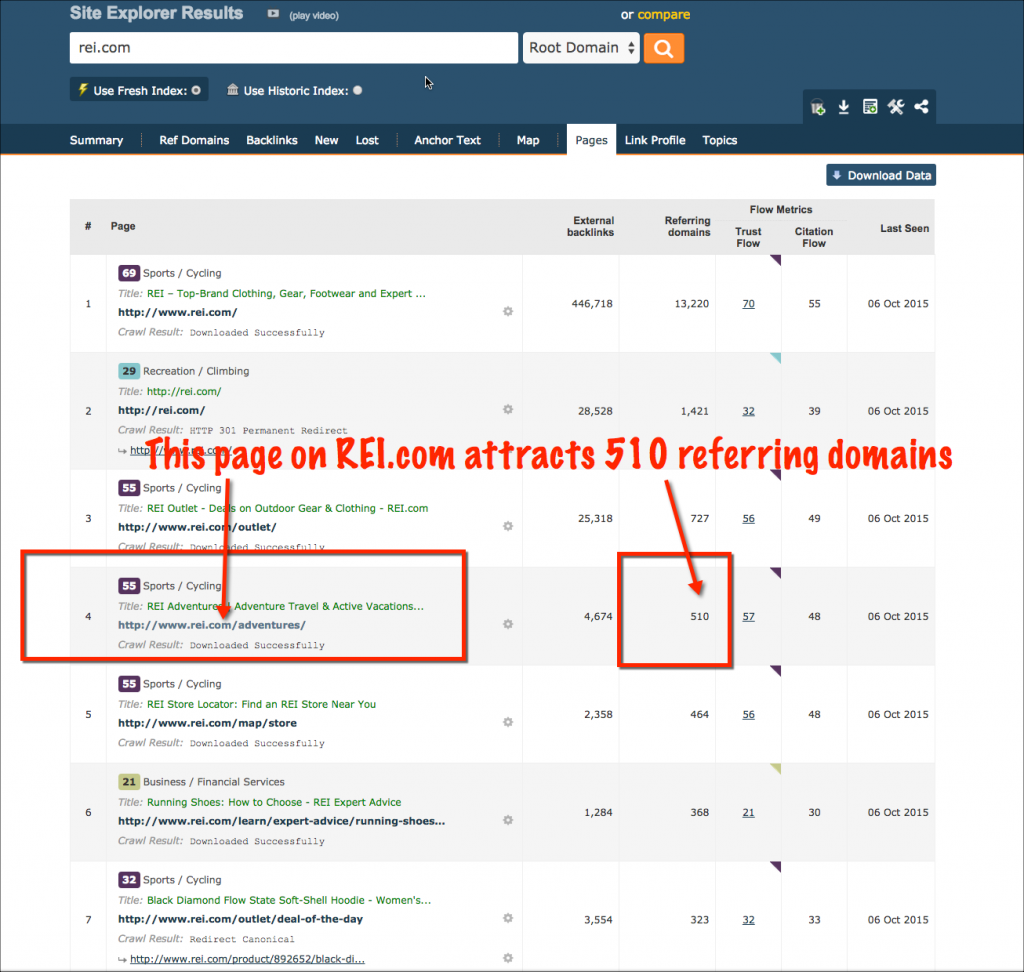
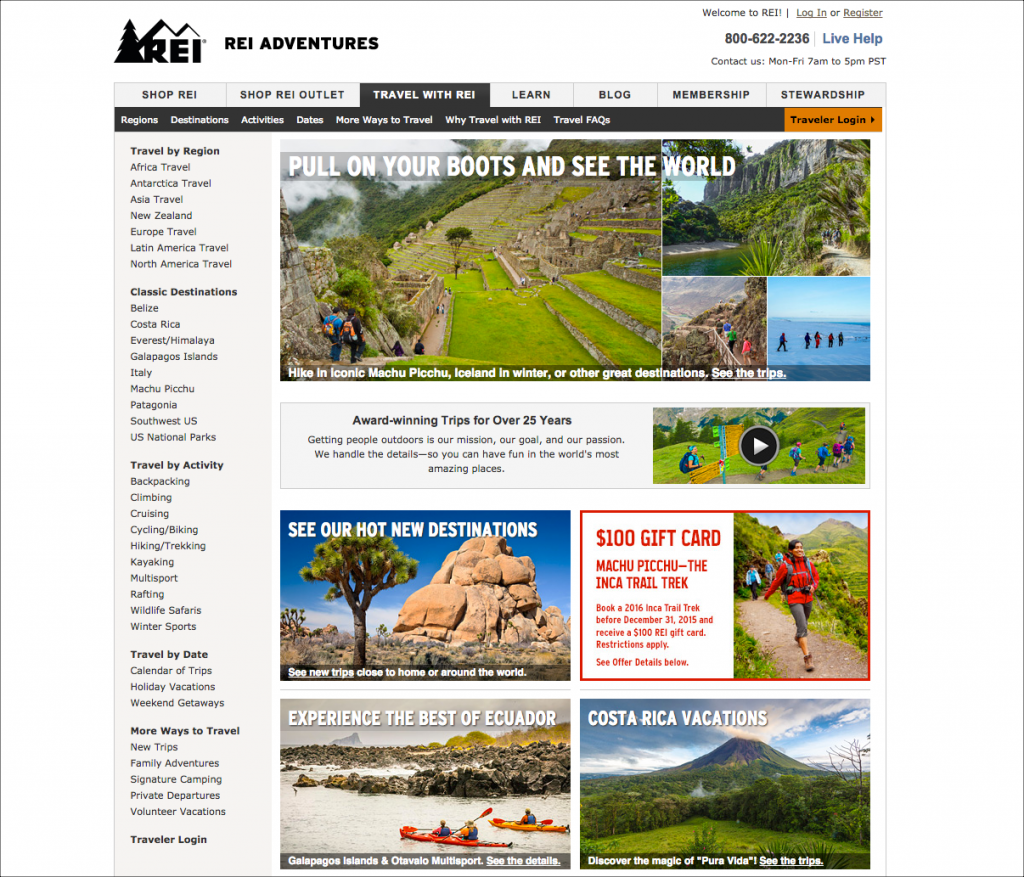
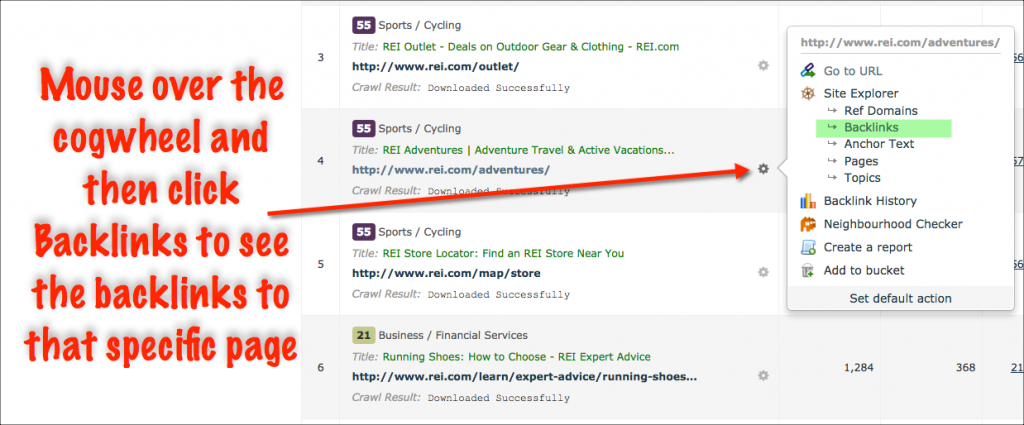
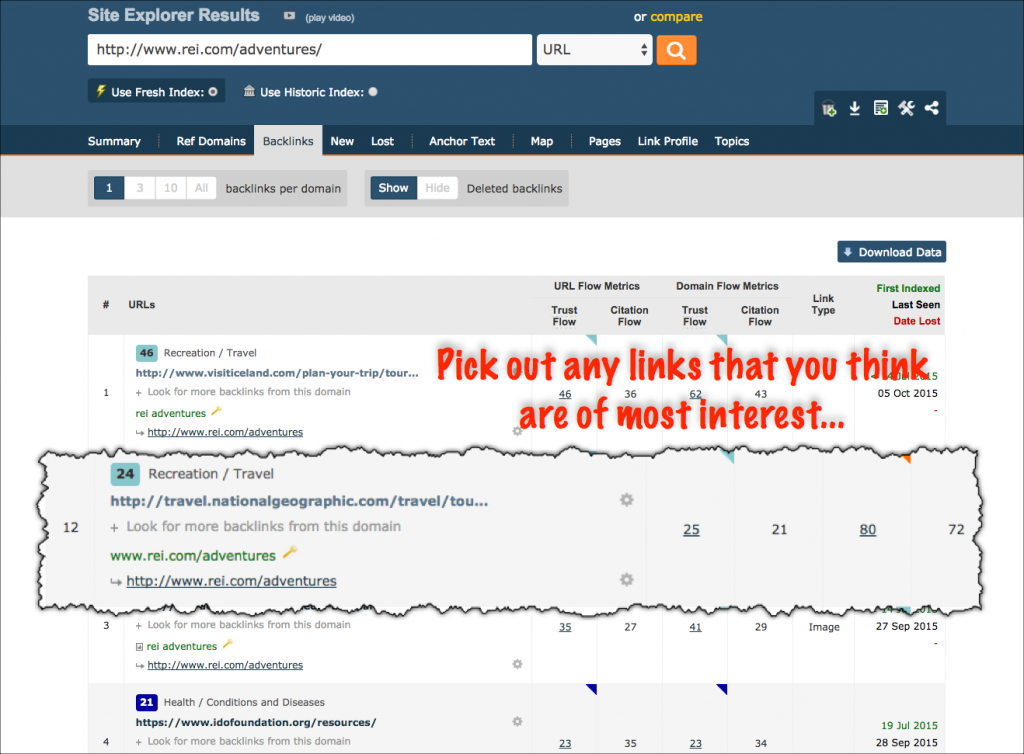
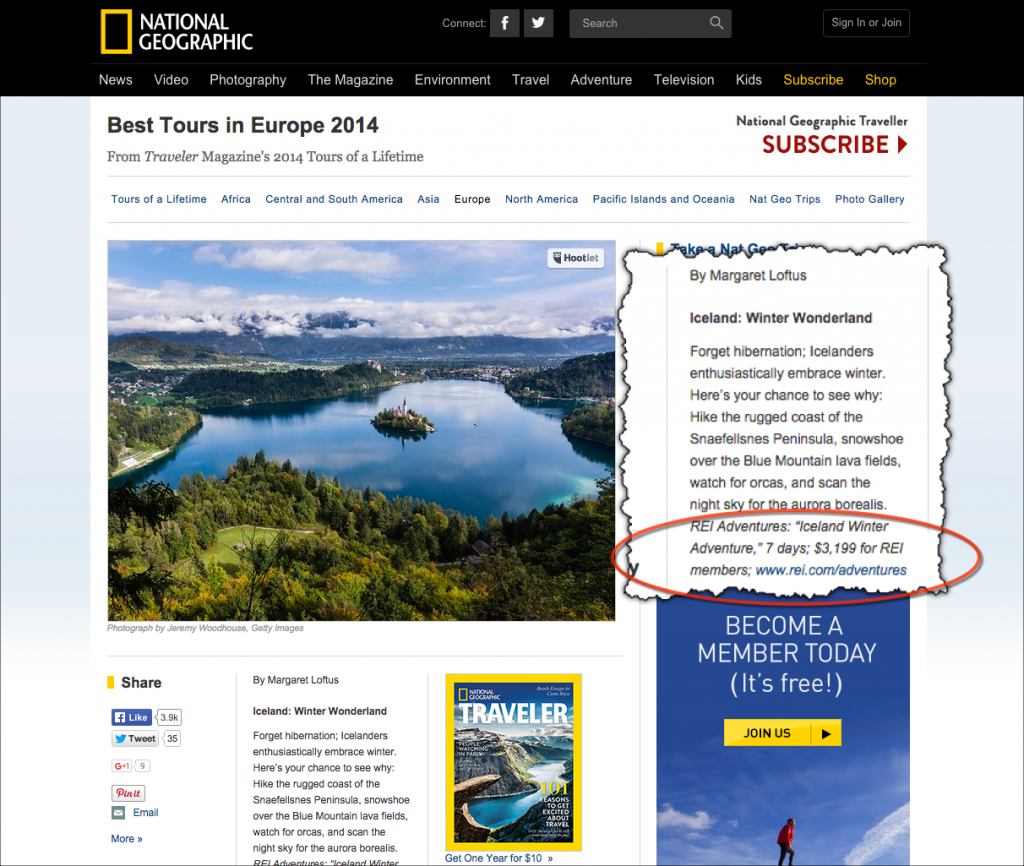
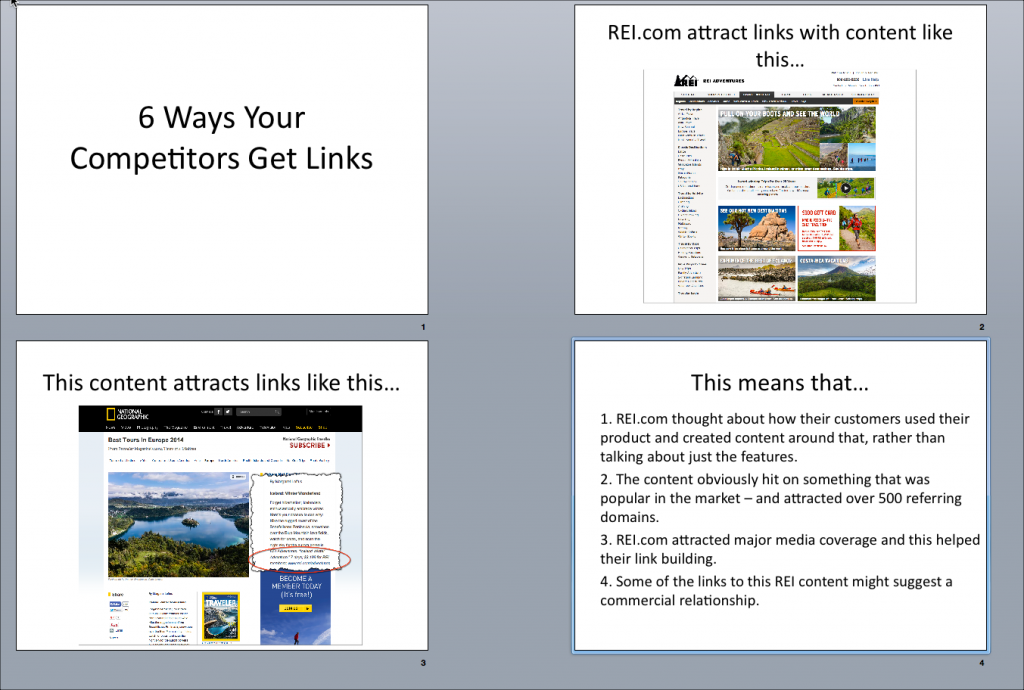
i Ken, thanks for the article. Just out of curiosity, with your statement "Now I can see the link in situation and can understand how the link got there"
With that link How do you think the link did get there? Guest post?
November 4, 2015 at 1:48 amGood question John. And there are two parts to the answer – the ‘strategy’ and the actual ‘mechanics’ of getting the link.
In the context of this article, strategy is the most important part. REI.com got the link because they created content about the situation in which their products were used – ‘travelling in the wilderness’ – not just content about the products themselves.
The strategic question to explore with the client is ‘have they created content around how customers use their products?’
On the ‘mechanics’ side, there are a number of ways that the link might have got there:
By the journalist doing a Google search and the relevant content coming up in the results
By the journalist researching their website
By the journalist sending out HARO query
By the journalist remembering a press release in the past
Or indeed, by reading a guest post somewhere as you suggest.
But ALL of these depend on the content being created in the first place – which takes me back to the strategy question – has the client created content around how their products are used – and that’s the area I want to explore with the client.
I hope that helps,
Ken
November 4, 2015 at 9:33 am